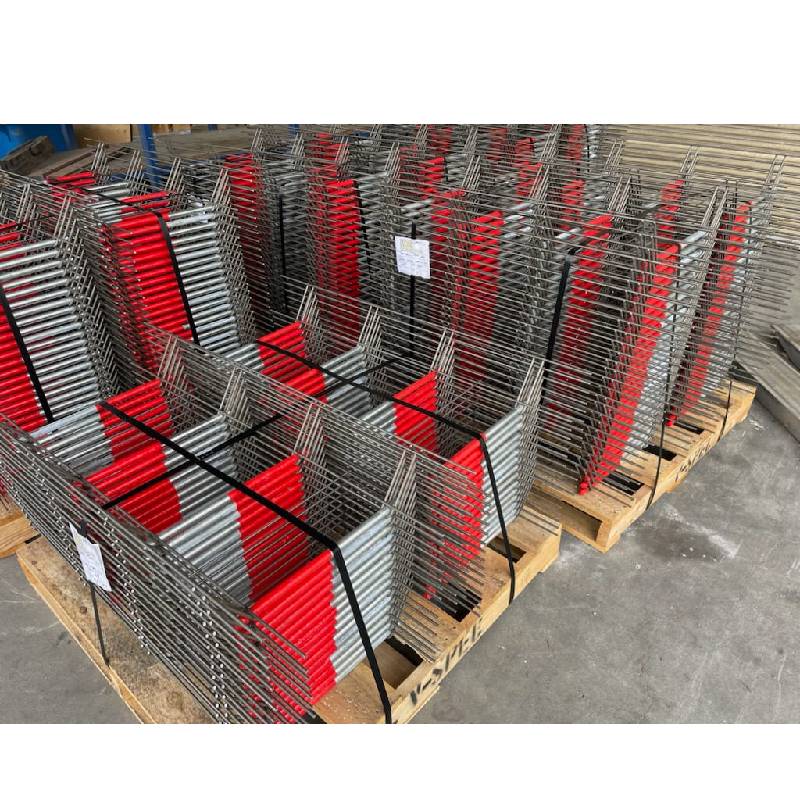
- Mobile Phone
- +8613931874955
- sales@cntcmetal.com
ladder type joint reinforcement
Ladder Type Joint Reinforcement An Overview
In the realm of construction and structural engineering, ensuring the integrity and longevity of structures is paramount. Among various techniques employed to enhance these qualities, the ladder type joint reinforcement has emerged as a practical solution, particularly in masonry structures. This specialized reinforcement approach not only enhances the structural performance but also contributes to the stability and durability of walls subjected to various forces.
Understanding Ladder Type Joint Reinforcement
Ladder type joint reinforcement consists of horizontal and vertical wire components, resembling a ladder, hence its name. Typically made from high-strength steel, this reinforcement is embedded into the mortar joints of masonry walls during construction. Such positioning allows it to provide additional tensile strength and ductility to the wall assembly, offering a synergistic effect when paired with masonry's compressive strength.
The primary purpose of this reinforcement is to control cracking, enhance load distribution, and improve the overall structural performance of walls. It provides a continuous reinforcement that mitigates the risk of vertical cracks developing due to settling, temperature changes, or other dynamic forces. By integrating this reinforcement method, engineers can enhance the resilience of buildings to environmental stresses and potential seismic activity.
Applications of Ladder Type Joint Reinforcement
Ladder type joint reinforcement is commonly used in a variety of construction scenarios. Its application is particularly prevalent in buildings with long masonry walls, where the risk of cracking is heightened. This type of reinforcement is equally beneficial in load-bearing walls, parapets, and retaining walls. Additionally, it has found a significant place in both new construction and retrofitting projects aimed at enhancing the performance of existing buildings.
ladder type joint reinforcement

In seismic zones, the importance of such reinforcement becomes even more pronounced. The ladder type joint reinforcement helps to maintain the integrity of masonry walls by improving their ability to withstand lateral forces during tremors, thus offering a reliable solution in earthquake-prone regions. This proactive approach to fortifying structures has been mandated in many building codes, ensuring that safety remains a top priority in civil engineering practices.
Benefits and Considerations
There are several advantages to utilizing ladder type joint reinforcement in masonry construction. One of the most significant benefits is the increased ductility of masonry walls, which allows them to absorb and dissipate energy effectively without catastrophic failure. This contributes to enhanced overall structural safety.
Moreover, ladder type joint reinforcement is cost-effective compared to other reinforcement methods. The materials used are relatively inexpensive, and the installation process is straightforward, making it an attractive choice for architects and builders. Additionally, maintaining a consistent quality of materials during construction can further optimize the benefits gained from this reinforcement technique.
However, while ladder type joint reinforcement offers numerous advantages, careful consideration must be given to its design and implementation. The effectiveness of this reinforcement hinges on proper installation within the mortar joints, necessitating skilled labor and adherence to best practices. Furthermore, it is crucial for architects and engineers to accurately assess the specific structural requirements of a project to determine the appropriate placement and spacing of the reinforcement.
Conclusion
In conclusion, ladder type joint reinforcement stands out as an effective solution for enhancing the structural integrity of masonry walls. Its adoption in construction not only addresses potential issues such as cracking and load distribution but also plays a vital role in improving the overall safety of buildings, especially in areas susceptible to seismic activity. As construction practices continue to evolve toward greater resilience and safety standards, ladder type joint reinforcement is poised to remain a critical element in the engineering toolkit for future projects. With ongoing advancements in materials and techniques, the efficacy and application of this reinforcement method will continue to develop, ensuring stronger and safer structures for generations to come.
share:
-
Your Source for Concrete Wall Ties and Masonry AccessoriesNewsJul.10,2025
-
Unlocking the Power of Iron Wire for Every ProjectNewsJul.10,2025
-
Explore Advanced Chain Wire and Stainless Steel Mesh FencingNewsJul.10,2025
-
Discover the Benefits of Annealed Wire ProductsNewsJul.10,2025
-
Discover China Stainless Steel Wire Mesh SolutionsNewsJul.10,2025
-
Build with Confidence Using High-Performance Masonry AccessoriesNewsJul.10,2025
-
Why Sacrificial Formwork Is Redefining Underground ConstructionNewsJun.06,2025



















